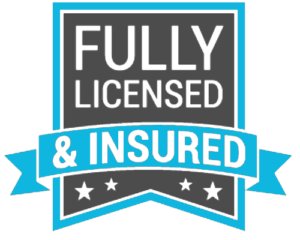Knowledgebase
Roof Fall Protection Procedure
| Roof Safety Procedure |
| Work safely, access difficult areas on roofs safely, provide peace of mind to your customers, protect the team |
| When/Where: Customers’ homes and businesses where roof access is necessary |
| Who: All Crew Leads & Technicians |
How:
- After performing JHA, assess the structure
- If roof access is necessary, determine anchor points on either side of the structure.
- Identify anchor types that will be used on each side.
- If using a vehicle anchor point, only use the following methods:
- Wrap yellow anchor strap around frame or axle of vehicle and clip your safety line to the two rings using the locking carabiner on the end of your safety line.
- Clip safety line carabiner to trailer hitch anchor ring
- If using a part of the structure as an anchor point, only use the following methods:
- Wrap yellow anchor strap around structural component (buried post, footing, stone or brick column, etc.)
- If using ground anchors, follow these guidelines:
- Drive two anchors into the ground so that only 1” of the anchor is exposed above ground
- Space the anchors 18”-24” apart, parallel to the angle of the building you are facing.
- When threading the eyelets into the ground anchors, make sure you thread them in all the way
- Clip the Jane-Y lanyard to both eyelets using locking carabiners
- Clip the other end of the Jane-Y lanyard to the carabiner on the end of your safety line.
- If using a tree as an anchor point, follow this method:
- Wrap the yellow safety strap around the tree, and clip your safety line to the two rings using the locking carabiner on the end of your safety line.
- Only use trees that are at least 12” across. If the yellow safety line can’t reach all the way around your selected tree, wrap the safety rope around it and clip the carabiner to the rope, creating a loop around the tree.
- Put on your safety harness, ensuring all buckles are properly secured.
- Clip one end of your safety lanyard to one of the approved metal loops on your harness.
- Throw one end of the safety line over the roof, and then secure one end to your chosen anchor point.
- You can use the throw bag and throw line to help with this
- If the pitch isn’t too steep, you can also ascend the roof with the safety line and toss it over the far edge from the ridge line. Be very careful when doing this.
- Access the roof via ladder on the opposite side of your first anchor point, clipping your Kong rope grab to the safety line before climbing the roof. Bring your working line up with you.
- Climb to the roof’s ridge line, and tie an overhand loop in the safety line near the ridge line.
- Clip your working line carabiner to the safety line loop.
- Your partner can now anchor the other end of the safety line to the chosen anchor point.
- Pull up as much slack as possible before doing this.
- Make sure the safety line is not rubbing on delicate surfaces and that it won’t pull against anything that could be damaged or tipped over if a load is placed on the safety line.
- You can now transfer your Kong rope grab to the working line. Ensure that the grab is working properly. It should lock on the working line when you place your weight on the rope and harness.
- You can now safely work on the roof
- Use the point where the working line is clipped into the safety line as the center of your working radius.
- Do not move your rope grab too far down the working line. Your maximum distance from the center of your working radius should be about 1’ less than the distance from the edge of the roof to the the center of the working radius.
- Reposition your safety line and working line as needed to adjust for various ridge lines on a roof.
- When finished, reverse the process to break down your setup.
- CAUTION: Keep your rope grab attached to the safety line or working line at all times when on a roof!
- When packing your Safety bag, load it in this order
- Safety line
- Working line
- Throw bag and line
- Petzl Jane-Y lanyards
- Ground anchors
- Safety straps
- Harness/lanyard/Kong rope grab
- If ground anchors were used, level and refill holes with grass, etc. after extraction.
Updated on September 20, 2021
Powered by BetterDocs







